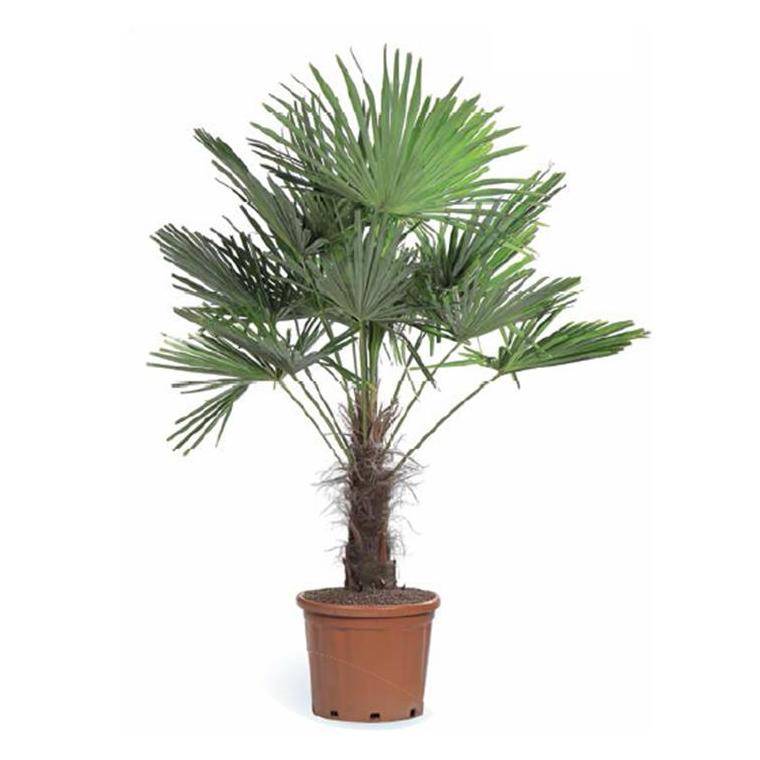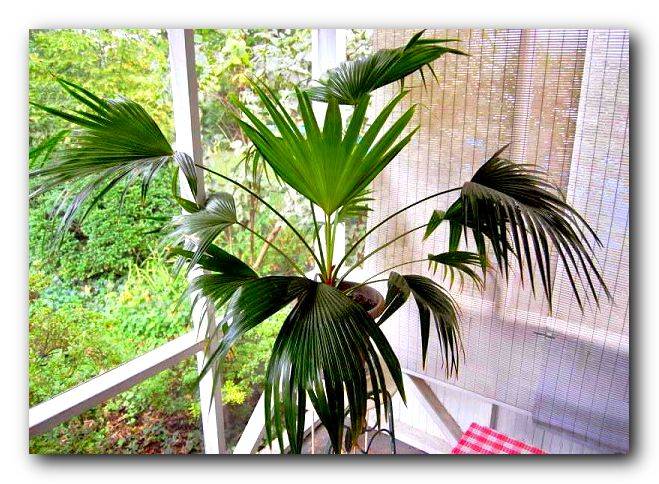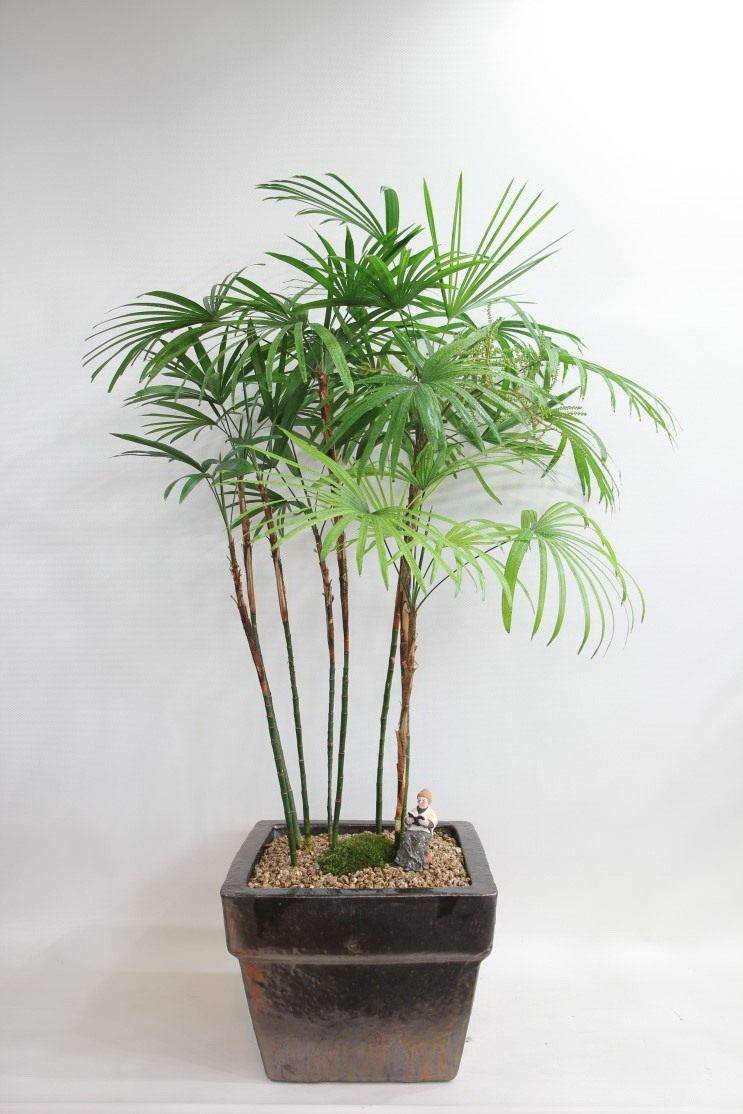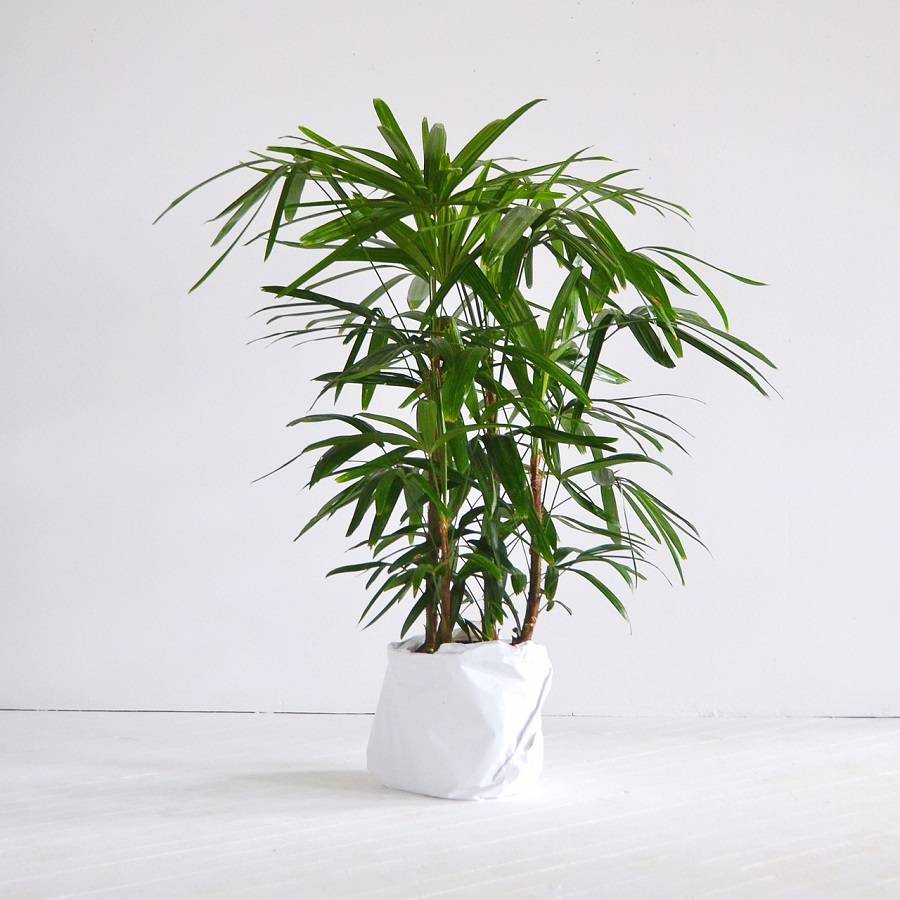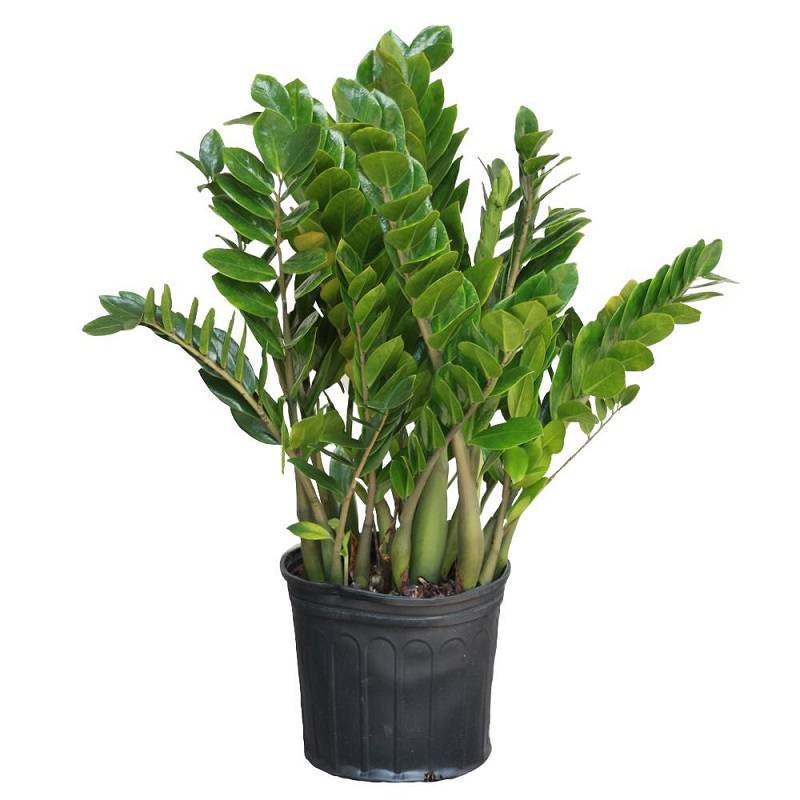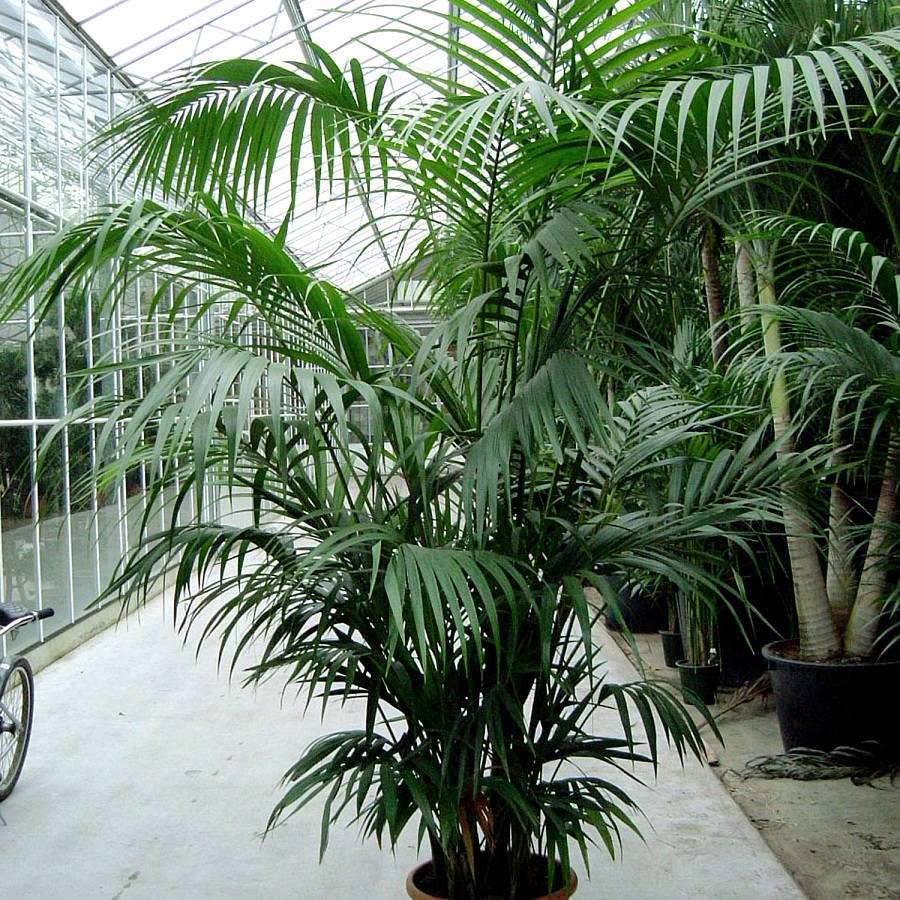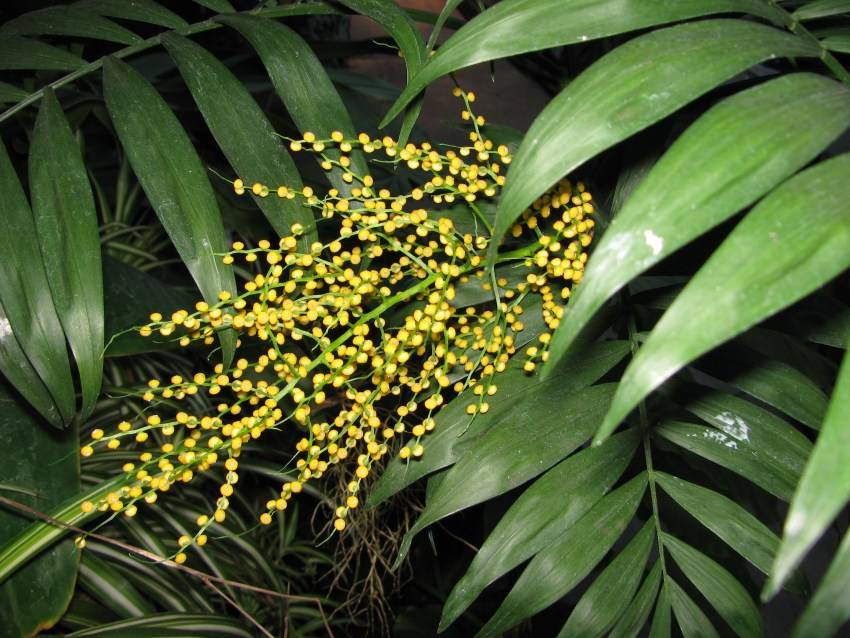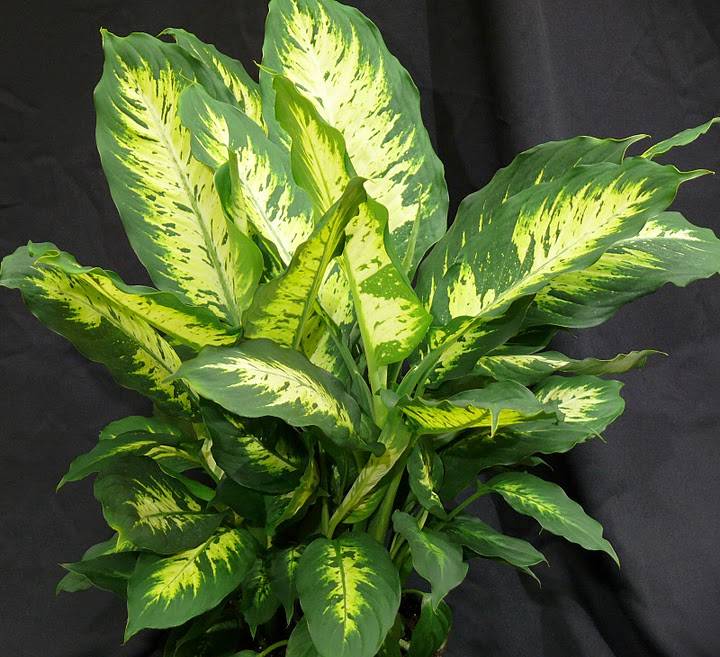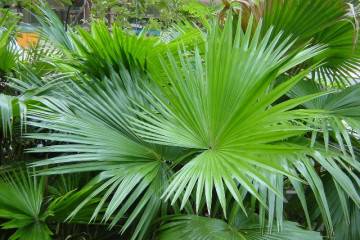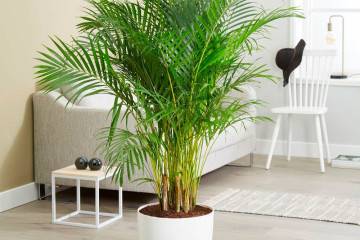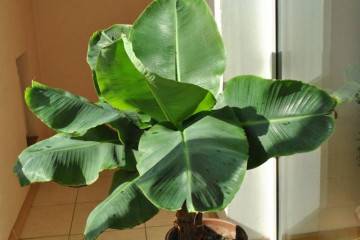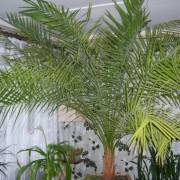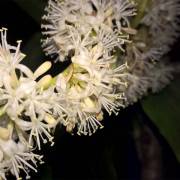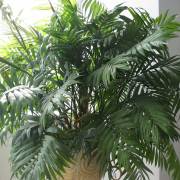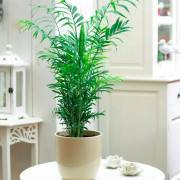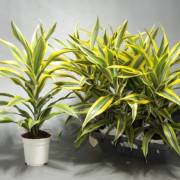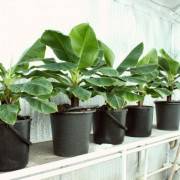House palm - exotic indoor flower
Content:
Indoor palms are widely used for interior decoration. Before you buy a piece of the tropics, you should carefully study the varieties of trees and familiarize yourself with the conditions for their cultivation.
Advantages and disadvantages of indoor palms
Large house flowers have their pros and cons.
Arguments in favor of purchasing an indoor palm tree:
- Exotic wood is a bright green accent in the interior of office or residential premises.
- Thanks to their large leaf plates, palms emit more oxygen than ordinary indoor specimens.
- The plant easily hides room flaws (uneven walls, paint defects, children's drawings).
The main disadvantage is the occupied area. Indoor palm can reach 2 meters in height, and some species are actively growing in width.
Popular types
The palm family has about 3400 species of woody plants. Below is a list of the most famous crops.
Trachikarpus fortune
Trachycarpus fortunei is a small tree (1-2.5 meters) with large fan-shaped leaves. In summer, it blooms, the inflorescences bear fruit with black berries.
Fan palm
This Chinese culture boasts luxurious waxy foliage. The length of the plates reaches 50 cm and more.
Bamboo palm
Indoor bamboo palm is a stem plant. On its trunk is a stalk, from which leaves in the form of feathers depart, as if they are glued to the trunk.
Rapis
Rapis is easy to recognize by its thin tubular trunks. The root system is located at the surface of the soil and forms daughter plants.
Hamerops
The genus hamerops includes one species - the squat hamerops. The name consists of two words: chamai - "low", rhops - "bush". In nature, the plant rarely reaches 4 meters. The height of decorative palms is 1.5 meters, but it must be borne in mind that the culture grows to the sides. Over time, the trunk becomes covered with hairs, which gives the tree a disheveled look.
Butea
Butea is a solitary plant with porous hard leaves. The most famous variety is cauliflower. The fruits of the boutique are edible, they make a very tasty jelly, hence another name - jelly palm.
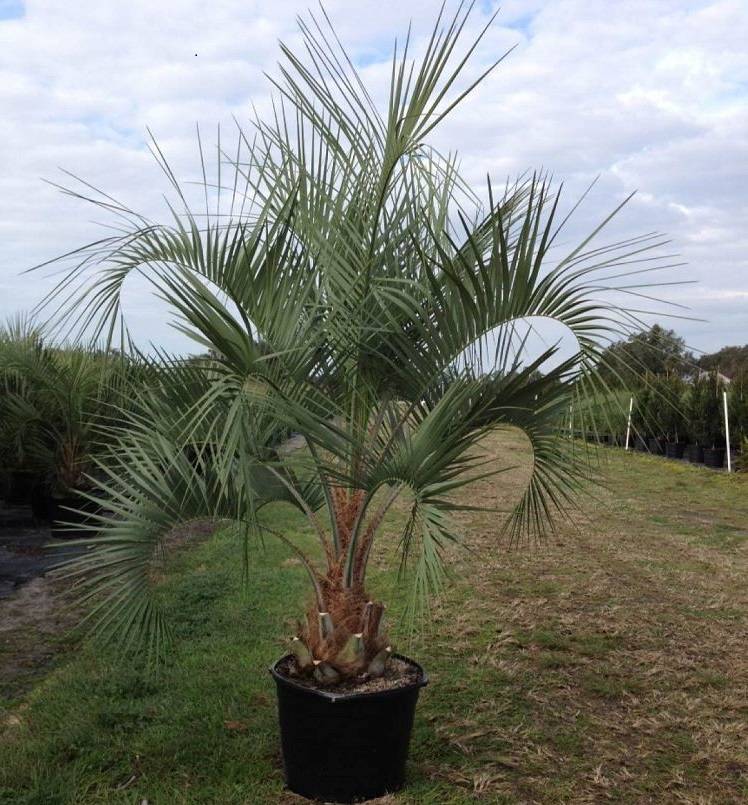
The leaves of the butia are gradually dying off, leaving petioles that give the trunk a characteristic texture.
Zamia
Another variety of domesticated palms is zamia. The culture has gained popularity due to its unpretentiousness. The evergreen flower has a shortened trunk. Rounded fleshy leaves. Zamia grows slowly - 1-2 leaves appear per year.
Likuala
Likuala is a compact tree with large fan-shaped leaves. This species requires special care.Throughout the year, he needs warmth, intense diffused light, high humidity.
Kentia
Kentia is famous for its endurance and unpretentiousness. All you need is space, good lighting and regular watering. At home, the tree grows up to 2 meters.
Hamedorea
In a pot, a palm tree grows up to 1.5 meters. At 3-4 years of age, the culture begins to bloom with hundreds of bright yellow flowers. After a while, black berries appear.
The process of flower formation slows down the growth of the palm tree, and can provoke the development of diseases. It is better to remove the peduncles as soon as they appear.
Gomuti
Gomuti is an economically important tree species. Sugar is extracted from the juice of the inflorescences, wood is used to make shingles, and the piles of bridges are braided with strong fibers of leaves.
Brachea
The brachea has a lush crown and a gray-brown, thickened trunk at the base. Leaves are tough with a pointed tip.
Plants falsely referred to as palms
Some houseplants look like palm trees. These are the same trees with columnar trunks and leaves growing from the crown of the head. Usually, flower growers do not share these cultures and care for them in the same way.
Castor oil plant
The plant got this name because of the similarity of seeds with mites. Castor oil plant is practically maintenance-free. It is enough to plant seedlings and watch their growth.
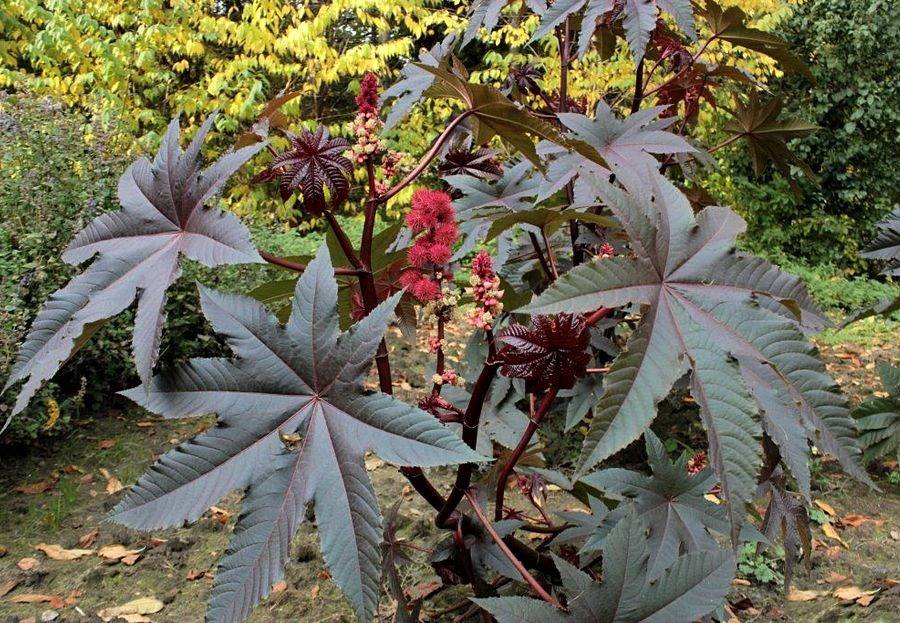
A sprawling bush with dissected purple leaves really looks like a palm tree and looks quite colorful
Banana palm
Bananas are perennial herbaceous plants that have nothing to do with members of the palm family. The trunk is made up of leaves that overlap. Over time, they dry out, darken and become like a tree trunk.
The dwarf varieties are suitable for growing in small pots. The fruits of ornamental species are inedible, but some gardeners manage to grow varieties that can be eaten.
Fig palm
The fig palm is a vigorous tree with a lush crown, which is mistakenly called a palm tree because of its large leaves. The plant can live for over 250 years.
Plants with wide leaves
Dieffenbachia can reach 2 meters in height by the age of five.
Brigamia flower, like palm trees, has a thick, straight stem, reaching a height of 1–2 m. On the crown there is a rosette of spoon-shaped leaves.
Plants with narrow long leaves
The list of palm-like plants can be supplemented with the following specimens:
- Nolina (Bocarnea). The stem of the flower is thickened at the base and resembles a bottle. For this feature, the bokarney is called the bottle tree. The crown consists of long, belt-like leaves.
- Dracaena. A lush flower with long pointed leaves at home grows up to 50 cm.
- Yucca. This palm flower is distinguished by tough, sharp leaves located at the top of the trunk. Yucca blooms with beautiful white bell-shaped flowers.
Conditions of detention
For active growth, most types of indoor palms need a lot of natural, diffused light. If such conditions cannot be created, preference should be given to hovee and hamedorea, which have adapted to partial shade.
Tropical crops need daily spraying. In low humidity, foliage will begin to die off. Trees do not tolerate drafts and sudden temperature changes. In summer, they are comfortable at + 18-22 ° C, in winter, the temperature can be reduced to + 10-15 ° C.
Light shop soil suitable for young plants. For adult specimens, it is better to prepare the mixture yourself. To do this, you need to mix 2 parts of garden soil, humus and peat with 1 part of sand.
Which palms are suitable for outdoor cultivation
Only frost-resistant species are suitable for outdoor cultivation. The most suitable option is trachycarpus fortune. In winter, the plant must be covered.
Other types of house palms can be carried outside only in summer, and when the warm days are minutes, you need to take the culture indoors.
The house palm is a spectacular plant. It happens that flower growers are frightened by the impressive size of exotic plants. And in vain, because these trees grow very slowly, so rooms with high ceilings are not needed to keep young specimens. Anyone can afford a tropical island.

